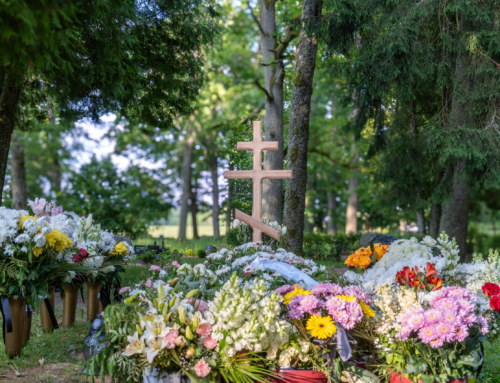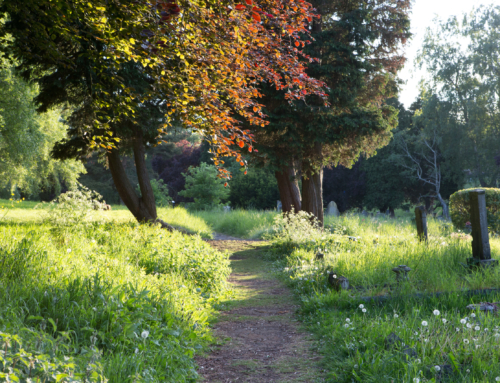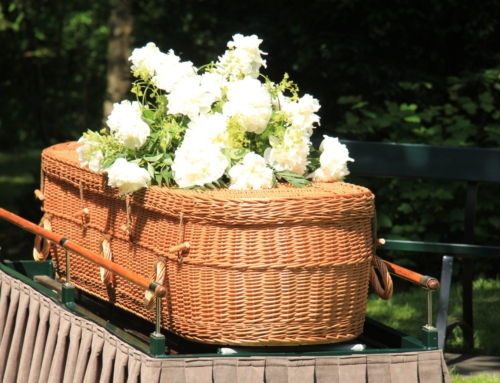When we think about saying goodbye to our loved ones, the options we choose for their final farewell often reflect our values and concerns about the environment. Surprisingly, the traditional burials that many of us think of can actually take quite a toll on our planet. With growing awareness of ecological issues, more people are exploring sustainable alternatives that honor life while nurturing nature. From green burials to innovative methods like aquamation and body composting, there are now numerous ways to ensure that our last act can be one of giving back rather than taking away. Join me as we dive into some of these eco-friendly burial options that not only show love for those who have passed but also for the world around us.
Some popular eco-friendly burial options include Green Burial, which involves burying the body in biodegradable materials without embalming fluids; Aquamation, a water-based cremation method that uses significantly less energy; and composting, which transforms human remains into nutrient-rich soil. These alternatives not only minimize environmental impact but also often come with cost benefits compared to conventional practices.
Why Consider Eco-Friendly Burials?
The choice to pursue eco-friendly burial options reflects a growing desire for sustainability and conservation in how we honor our loved ones. Traditional methods impose substantial harm to the environment and finite resources. For instance, every year, conventional burials consume approximately 100,000 tons of steel, 1.5 million tons of concrete, 77,000 trees, and an astonishing 4.3 million gallons of embalming fluid. These statistics illuminate the high cost to our planet at a time when many are looking for meaningful ways to reduce their impact on Earth.
Transitioning to eco-friendly methods can result in significant changes. Natural burials alone can decrease carbon emissions by up to 80% compared to traditional practices. Moreover, while decomposing bodies in regular graves may take up to ten years, natural burials can accelerate this process to as little as six months. This not only allows families to feel connected to nature but also drives home the point that even in death, we can contribute positively to our surroundings.
Additionally, many eco-friendly options, such as aquamation or green burials, often come with lower costs compared to traditional practices. Typically ranging from $1,500 to $5,000. Considering that the average traditional burial costs around $7,000, embracing these sustainable alternatives becomes both a financially wise and environmentally conscious decision.
Notably, embracing greener options encourages a return-to-nature approach and promotes biodiversity.
Increasingly popular among younger generations is the idea of human composting or terramation; it’s an innovative method where bodies are transformed into nutrient-rich soil. Picture this: instead of being interred beneath layers of concrete and steel, one’s remains could nurture plants. A beautiful cycle of life continuing beyond death. This practice nurtures ecological systems while minimizing land use with designated memorial forests or conservation areas championing green burial initiatives.
It’s also worth considering specific sites like Penn Natural Burial in Penn Hills, known for its serene environment and commitment to sustainable practices. Visitors often recount paths lined with local wildlife. An evergreen reminder of how life continues harmoniously alongside nature.
As society shifts towards these environmentally respectful practices, discussions surrounding preferences should start early.
Legal considerations play an essential role too; ensuring your wishes for an eco-friendly farewell are documented within estate planning discussions is critical. Not all jurisdictions have fully embraced these greener alternatives yet, so consultation with knowledgeable professionals can clarify available options while ensuring your desires align with local regulations.
Exploring these alternatives opens avenues towards more mindful approaches in burial practices that resonate deeply with our values regarding nature and legacy.
Green Burial Methods
Green burials are an increasingly popular choice for those wishing to minimize their environmental impact. Unlike traditional burials that typically mandate embalming fluids and concrete vaults, which restrict natural decomposition, green burials facilitate a gentle return to the earth. By encasing bodies in biodegradable materials like simple pine caskets or cloth shrouds, we allow nature’s processes to take their course. The beauty of this practice is rooted in its simplicity; it celebrates life while consciously considering our ecological footprint.
Types of Green Burials
At the heart of green burials is the commitment to using environmentally friendly materials. Families can choose between pine caskets, which break down easily, or a soft cloth shroud for wrapping the deceased. Such options not only honor the body in a dignified manner but also eliminate harmful chemicals often used during traditional embalming processes.
When considering this approach, it’s beneficial to seek out graveyards specifically dedicated to eco-friendly practices. These locations typically allow for hand-dug graves and explicitly avoid cement vaults, further supporting the earth’s natural recycling processes. For example, Penn Natural Burial in Penn Hills has garnered positive attention for providing services that align closely with these values.
Visitors to Penn Natural Burial often share experiences that resonate deeply with the ethos behind green burials. One visitor remarked, “The experience was serene, and the grounds were teeming with wildlife, creating a beautiful restorative atmosphere.” Such comments reflect the peace one might find knowing their loved ones rest in harmony with nature rather than under layers of concrete.
Additionally, considerations may extend beyond the burial itself. Many people gravitate towards more sustainable memorial options such as planting a tree above the grave or choosing biodegradable urns that encourage new life. This holistic view allows families to find solace not only in their bereavement but also in nurturing new growth and enriching the soil where they rest their loved ones.
In embracing green burial practices, we shift toward a legacy of respect and sustainability. A concept particularly resonant with younger generations who no longer want to participate in systems that may harm our planet.
This exploration of eco-friendly approaches sets the stage for innovative methods that prioritize our environment while honoring those we’ve lost.
Water-Based Cremation
Also referred to as aquamation, water-based cremation offers a more sustainable alternative to traditional cremation methods. This innovative process uses a combination of warm water and alkaline solutions to break down the body, significantly reducing energy consumption while also being less polluting. Unlike traditional fire cremation, which requires temperatures exceeding 1,600 degrees Fahrenheit and consumes considerable natural gas, aquamation operates at much lower temperatures and uses about 90% less energy. Imagine that. Saving our planet even in death!
The environmental benefits are not limited to just energy savings; the entire aquamation process is designed to be gentler on the earth. While traditional cremation emits CO2 equivalent to a 1,000-mile car trip, aquamation produces far less greenhouse gas emissions. This transformation signifies a shift in how we view end-of-life practices and aligns with growing public demand for more environmentally conscious interment options.
Nobel laureate Desmond Tutu recognized the value of this approach and chose aquamation for his final farewell. By opting for this method, he effectively reduced his carbon footprint. Even in death. His choice serves as a powerful statement about personal responsibility towards our environment, encouraging others to consider similar eco-friendly options.
When we think about making choices that reflect our values, water-based cremation represents an important opportunity for sustainable end-of-life care. During the process, the body is placed in a heated tank containing an alkaline solution. The combination of heat, pressure, and alkaline substances gradually breaks down the body tissues instead of relying on flames. The end result? A sterile liquid—known as effluent—that can be safely returned to nature without leaving behind harmful residues.
With legislative changes recently occurring in Pennsylvania. Specifically, House Bill 1172 passing with bipartisan support. This eco-conscious approach is being recognized for its potential impact on funeral practices statewide. State Representatives Mary Jo Daley and Chris Rabb are leading this charge, emphasizing the urgent need for sustainable interment options that minimize negative environmental consequences.
As society grapples with complex environmental issues related to end-of-life care, it becomes clear that maintaining awareness of our choices is essential. By embracing alternatives like water-based cremation, we not only pay tribute to our loved ones in meaningful ways but also ensure that our actions contribute positively to future generations and the environment at large.
This significant shift towards eco-friendly practices invites us to explore other innovative approaches that further challenge traditional views on burial methods.
Mushroom Burial Suits
Mushroom burial suits offer a unique way to transform the traditional burial process into something that benefits both the individual and the environment. At their core, these suits are designed specifically to speed up natural decomposition using the remarkable powers of fungi. Conventional burial practices often involve chemicals and non-biodegradable materials that can harm the earth. In contrast, mushroom suits provide an alternative that actively contributes to soil health.
How It Works
The magic of these suits lies in their composition; they are infused with mushroom spores and microorganisms that break down organic matter efficiently. Once interred, these spores begin their work, consuming human tissue while also neutralizing toxins that may have accumulated in the body. This decomposition process enriches the soil without introducing harmful chemicals.
Imagine this: instead of becoming yet another mark on the earth, those who choose a mushroom burial suit literally nourish it, enabling new life to flourish from their remains.
This method accelerates the natural breakdown of body tissues while enriching the surrounding soil with nutrients. Families can take comfort in knowing that their loved ones contribute positively to the cycle of life.An idea beautifully encapsulated by Bob Hendrikx from Loop Biotech who remarked, “What really frustrates me is that when I die, I’m polluting the Earth.”
The attention garnered by high-profile cases, such as actor Luke Perry opting for a mushroom burial suit, has significantly heightened awareness around this option. Perry’s family expressed their belief that it was “a fitting tribute to his love for nature,” demonstrating how personal values can influence end-of-life choices.
Environmental Benefits
The environmental impact of choosing a mushroom burial suit cannot be overstated. Traditional burial methods typically lead to land use and resource consumption issues, with many caskets taking decades or even centuries to decompose. In sharp contrast, a body encased in a mushroom suit can fully decompose within two to three years, dramatically shortening the time it takes for one’s final resting place to transform back into productive soil.
The suit serves dual purposes: it nourishes the earth while addressing societal concerns about environmental degradation. As more individuals express interest in sustainable living. Whether through green products or lifestyle choices. Opting for a mushroom burial suit is an impactful way to apply those values beyond life itself.
With these innovative practices gaining traction, it’s important to explore additional eco-conscious options available today. Such choices not only redefine how we envision our final farewell but also ensure a lasting connection between ourselves and the planet we cherish.
Sea Burial Options
Sea burials have a rich history that speaks to our connection with the water. Historically, these practices were seen as a final journey into the great unknown, but now they’ve transformed into sustainable alternatives that align with modern eco-conscious values. Traditional sea burials typically involve placing the deceased in a weighted biodegradable casket, allowing them to gradually return to nature. However, advancements have introduced new approaches that have piqued the interest of many families seeking more environmentally friendly options.
Types of Sea Burials
One popular method is the use of water-soluble urns. These urns dissolve in water over time, releasing the ashes of the loved one into the ocean without leaving any harmful residues behind. This approach aligns beautifully with the ideals of eco-friendliness and minimal environmental impact. In fact, some companies offer services that combine cremated remains with biodegradable urns, creating a blend that supports marine ecosystems as it dissolves.
Echoing the sentiment of supporting life even in death, many families find comfort in knowing their loved ones will nourish living environments.
Another emerging practice involves blending ashes with eco-friendly concrete to construct artificial reefs. This technique not only memorializes individuals but also fosters biodiversity beneath the waves. Companies like Eternal Reefs specialize in this process by creating “reef balls” made from concrete mixed with ashes. Which are then submerged to provide habitats for various marine species.
One customer shared their positive experience by stating. “We loved the idea that even in death, we could support marine ecosystems.” Such reflections exemplify how meaningful these choices can be for families navigating grief while honoring their loved ones’ wishes.
It’s vital to consider legal and logistical aspects when planning for a sea burial. As regulations may vary widely based on your location. Therefore, understanding local guidelines and requirements is essential to ensure a smooth process during an emotionally charged time. This awareness sets the stage for exploring innovative methods that further emphasize ecological responsibility in how we honor those we’ve lost.
Body Composting Techniques
Also known as Terramation or human composting, body composting transforms remains into nutrient-rich soil. This eco-friendly method offers a sustainable alternative to traditional burial and cremation practices. Imagine a process that honors life while nurturing new growth. By converting our bodies into usable compost, we contribute positively to the environment even after our time on Earth has ended.
How It Works
The process begins with placing the deceased in a specially designed vessel filled with organic materials. Such as wood chips, straw, and sometimes supplemented with alfalfa for added nutrients. This carefully curated blend serves as both bedding and food for microorganisms essential for breaking down the body.
Once inside the vessel, the mixture undergoes aeration, promoting oxygen flow which stimulates microbial activity.
This decomposition process typically takes about 30 days and results in soil rich in nutrients, making it perfect for gardening or planting trees.
Notably, this innovative method has gained traction with legal approval in several states: Washington (2019), Colorado (2021), and Oregon (2021). More states are considering similar legislation, showcasing a growing acceptance of sustainable burial practices.
One participant expressed profound comfort at the concept: “The ability to create life from death is incredibly comforting.” It’s a sentiment shared by many who are drawn to this gentle approach. Finding solace in contributing to nature’s cycle rather than simply fading away.
As this practice continues to grow in popularity. It opens discussions about how we perceive death and our footprint on the planet. Exploring ethical considerations alongside personal choices can help us find peace in our final decisions. While embracing this refreshing approach to end-of-life care.
In summary, understanding eco-friendly burial options not only allows us to honor our loved ones. It also contributes positively to the environment. This mindful choice creates a lasting legacy that sustains life even after death.








 Chrysta Bell Zucht is an internationally known Actor, Musician and the Steward of Countryside Memorial Park. She has always shared her father’s passion for Natural Burials, and upon his unexpected death in 2009 had the soul-satisfying experience of giving him the green burial he had always wanted. She remains deeply dedicated to Countryside and has vowed to continue to offer it as a serene, peaceful place for eco-conscious families to bury, memorialize and celebrate their Beloveds.
Chrysta Bell Zucht is an internationally known Actor, Musician and the Steward of Countryside Memorial Park. She has always shared her father’s passion for Natural Burials, and upon his unexpected death in 2009 had the soul-satisfying experience of giving him the green burial he had always wanted. She remains deeply dedicated to Countryside and has vowed to continue to offer it as a serene, peaceful place for eco-conscious families to bury, memorialize and celebrate their Beloveds. Music adds a memorable and deeply moving element to any ceremony, especially if it is music that your Loved One loved.
Music adds a memorable and deeply moving element to any ceremony, especially if it is music that your Loved One loved.